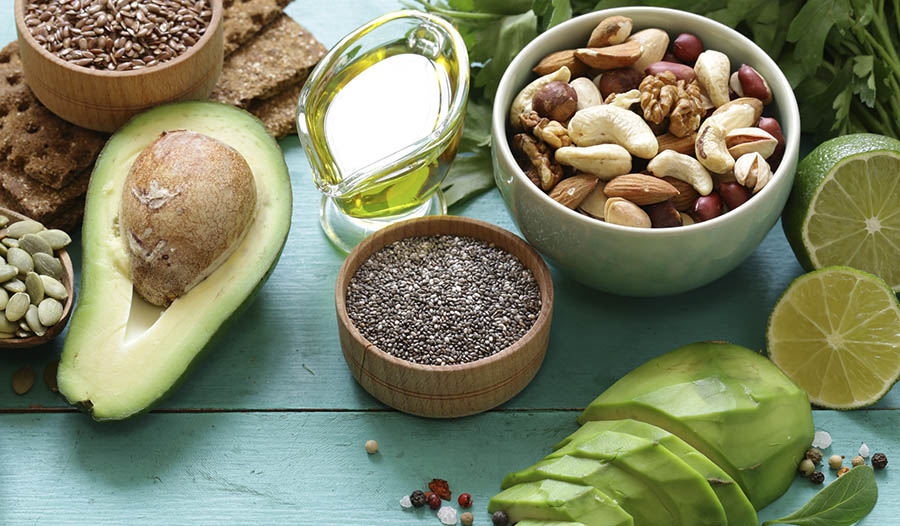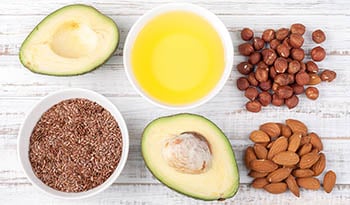Există un astfel de lucru ca prea multă grăsime? Nu pe dieta ketogenică

Ce este cetoza? De ce este important?
Cetoza se referă la procesul metabolic normal de alimentare a organismului folosind grăsimi atunci când carbohidrații nu mai sunt disponibili. În condiții normale - în care o persoană nu are o afecțiune metabolică - corpul este „flexibil” metabolic. Aceasta înseamnă că o persoană poate folosi atât grăsimi, cât și carbohidrați ca sursă de combustibil.
Când o persoană a postat sau a început o dietă bogată în grăsimi și cu conținut scăzut de carbohidrați, există un proces adaptativ care are loc în care organismul trece la arderea în principal a grăsimilor într-un proces cunoscut sub numele de cetogeneză. Acest proces poate dura câteva zile până la o săptămână pentru a apărea la majoritatea oamenilor. Corpurile cetonice sunt molecule care se formează în ficat din grăsimi. Acest lucru este important deoarece zahărul (glucoza) din carbohidrați este sursa predominantă de combustibil pentru creier. Glucoza poate traversa bariera hematoencefalică pentru a alimenta creierul, iar acizii grași (din grăsimi) nu pot. Cu toate acestea, cetonele pot trece la creier și, prin urmare, pot fi utilizate de creier pentru combustibil. Aceasta a fost o adaptare deosebit de importantă pentru strămoșii noștri în perioadele de foamete în care alimentele erau rare.
Ce face dieta ketogenică diferită de Atkins?
Dieta ketogenică nu este o dietă bogată în proteine. Dieta ketogenică tipică este un raport de 4 grăsimi la fiecare 1 proteină. Distribuția tipică este de 75-80% grăsimi, 15-20% proteine și 5% sau mai puțin carbohidrați. Este o dietă foarte bogată în grăsimi, proteine moderate și foarte săracă în carbohidrați. Dieta Atkins nu are aceeași limitare a proteinelor. Anumite proteine, atunci când sunt descompuse în aminoacizi, pot fi utilizate similar cu carbohidrații pentru combustibil și pot determina o persoană să iasă din cetoză. Mulți oameni fac greșeala de a crede că urmează o dietă ketogenică, dar urmează într-adevăr mai mult o dietă în stil Atkins. Este adesea foarte dificil pentru oameni să mănânce aproximativ 80% din caloriile lor sub formă de grăsimi.
Cine poate (sau nu poate) beneficia de dieta ketogenică?
Dieta ketogenică câștigă tracțiune ca dietă pentru pierderea în greutate și prevenirea bolilor. Cercetările privind dieta ketogenică pentru pierderea în greutate și diabet sunt promițătoare, dar datorită naturii restrictive a dietei pot fi greu de susținut. Anumite medicamente, atunci când sunt combinate cu dieta ketogenică, pot crește riscul de scădere periculoasă a zahărului din sânge. Este recomandat să lucrați cu un dietetician sau un furnizor de servicii medicale atunci când urmați această dietă.
Dieta ketogenică a fost cercetată ca terapie pentru pacienții cu cancer datorită potențialelor mecanisme antitumorale ale dietei. Cu toate acestea, există câteva întrebări la care trebuie răspuns cu privire la siguranța și eficacitatea utilizării acestei abordări dietetice la pacienții cu cancer înainte ca aceasta să devină o terapie larg utilizată.
Dovezile privind dieta ketogenică în performanța atletică sunt mixte. Probabil că nu este o abordare bună pentru sportivii care participă la activități de intensitate ridicată sau sporturi de putere, cum ar fi haltere sau sprint. Acest lucru se datorează faptului că procesul de ardere a grăsimilor este prea lent pentru activitățile cu energie ridicată în care carbohidrații oferă o sursă rapidă de combustibil.
Alte considerații
Există puține sau deloc cercetări cu privire la efectele pe termen lung ale unei diete ketogenice. Deoarece dieta este atât de săracă în carbohidrați, poate fi foarte dificil pentru persoanele care urmează această dietă să obțină fibre adecvate. Din acest motiv, este important ca majoritatea aportului de carbohidrați să provină din legume fără amidon, inclusiv o mulțime de verdeață cu frunze. Un supliment probiotic de fibre sau ar putea fi, de asemenea, un plus bun.
Alimente și suplimente prietenoase cu ceto-ul:
- Grăsimi: dieta este foarte bogată în grăsimi, dar se recomandă includerea mai multor grăsimi sănătoase pentru inimă din avocado, măsline, pește și unele nuci/semințe .
- Proteinele sunt o parte importantă a acestei diete, dar nu prea mult. Alimentele proteice includ carne, pește, nuci/semințeși unele lactate, cum ar fi brânza. Proteinele din lapte și leguminoase sunt limitate datorită conținutului de carbohidrați.
- Legume fără amidon, în special verdeața cu frunze. Luați în considerare adăugarea unei pulberi verzi pentru nutrienți adăugați și fibre.
- Luați în considerare o multi-vitamină. Datorită naturii restrictive a dietei, obținerea unui număr adecvat de vitamine și minerale ar putea fi o provocare.
Referințe:
- https://www.nature.com/articles/ejcn2013116
- https://www.ncbi.nlm.nih.gov/pmc/articles/PMC4212585/
- https://www.ncbi.nlm.nih.gov/pubmed/19049574
- https://jamanetwork.com/journals/jama/article-abstract/2669724
Declarație de declinare a responsabilității:Acest blog nu are ca scop să ofere un diagnostic.














































































 Cuprins
Cuprins












